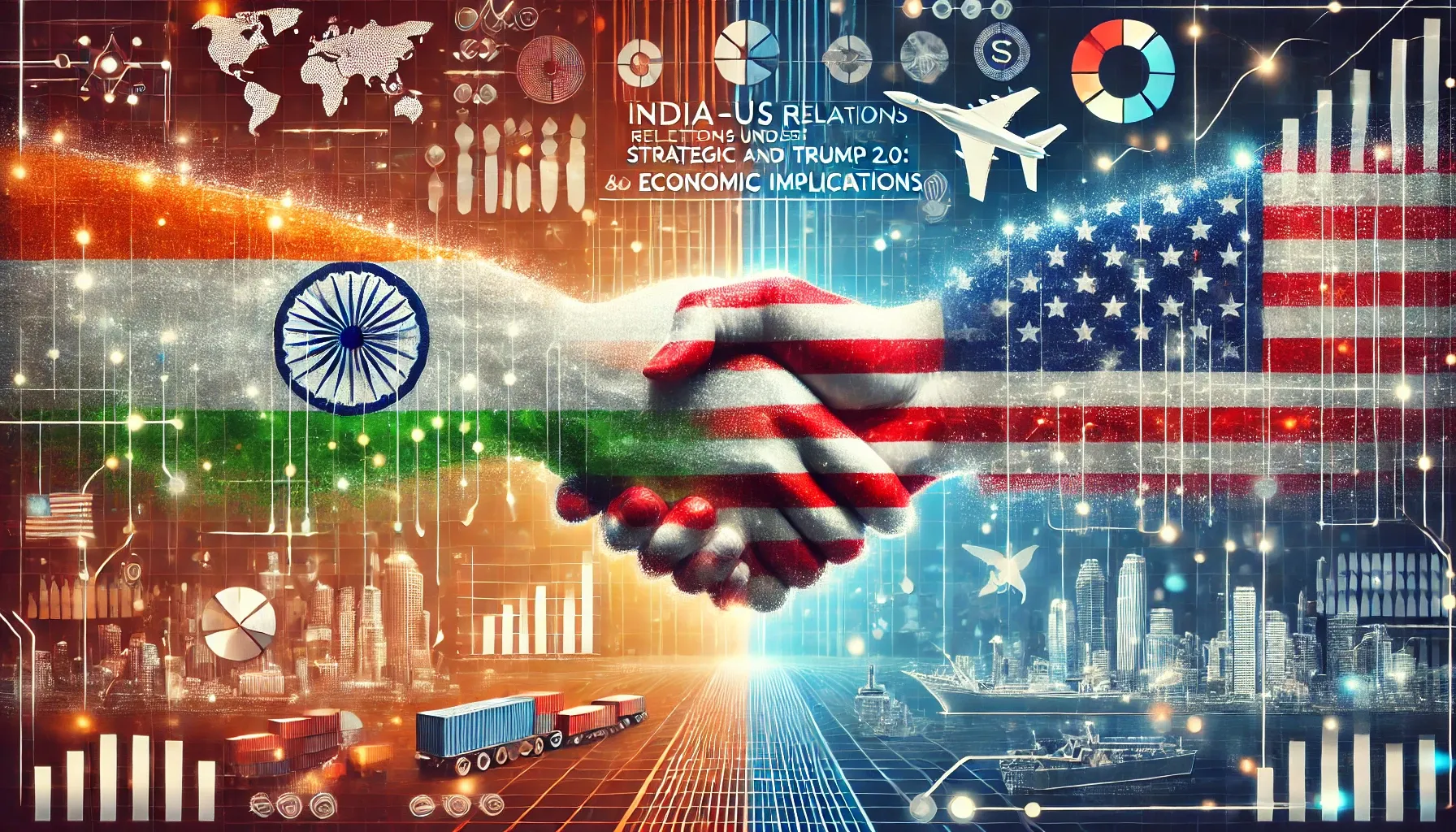UPSC
Indian Express Concise
India-US Relations Under Trump 2.0: Strategic and Economic Implications
Last Updated
4th April, 2025
Date Published
4th April, 2025
Share This Post With Someone

Donald Trump’s re-election as US President in 2025 introduces a new phase in India-US relations, marked by his "America First" policy and focus on reciprocal tariffs. This shift offers both opportunities and challenges for India, requiring a nuanced understanding of global trade, geopolitics, and internal reforms, critical for aspirants preparing for competitive examinations.

Information in Points:
- Trump’s Victory: Donald Trump won the US presidential election against Kamala Harris, securing a second term with a strong electoral college majority of 312 votes to Harris’s 226, and a popular vote lead of over 4 million as of April 3, 2025.
- Global Trade Shift: Trump’s win signals the end of traditional globalization, replacing it with an "America First" approach emphasizing protectionism and reciprocal tariffs.
- Trade Policy: He aims to impose tariffs matching those levied on US goods by other countries, targeting nations like India, previously labeled a “big trade abuser” for its high tariffs.
- India’s Trade Context: In 2024, India’s exports to the US were valued at $77.5 billion, while imports stood at $42.9 billion, yielding a $34.6 billion trade surplus for India.
- Tariff Concerns: Trump’s first term saw tariffs of 25% on Indian steel and 10% on aluminum, alongside the withdrawal of India’s GSP status in 2019, impacting $5 billion in exports.
- Bilateral Progress: Despite past tensions, Modi and Trump agreed in 2025 to designate senior officials to negotiate enhanced market access, tariff reductions, and supply chain integration.
- Negotiation Timeline: India sent a delegation led by Piyush Goyal to meet US officials like Howard Lutnick and Jamieson Greer from March 3-6, 2025, following Greer’s confirmation as US Trade Representative on February 26.
- Geopolitical Alignment: Trump’s anti-China stance aligns with India’s interests, strengthening the Quad (India, US, Japan, Australia) to counter China’s Indo-Pacific influence.
- Defense Ties: Enhanced cooperation includes joint military exercises and India’s $4 billion purchase of 31 MQ-9B drones, reinforcing strategic partnership.
- Immigration Challenges: Trump’s restrictive H-1B visa policies could limit opportunities for Indian IT professionals, with 73% of such visas issued to Indians in 2022.
- Climate Policy Shift: Trump’s skepticism on climate change and intent to exit the Paris Accord may strain India-US climate cooperation, despite India’s renewable energy push.
- Internal Reforms: Experts like C. Raja Mohan suggest India needs structural reforms—land, labor, judicial, and tariff reductions—to leverage Trump’s policies effectively.
- Global Implications: Trump’s disruption of WTO norms and focus on bilateral deals could force India to adapt its trade strategy amid an uncharted global economic landscape.
- Historical Context: During Trump’s first term, Modi’s personal diplomacy (e.g., “Howdy Modi” event) mitigated trade frictions, a strategy likely to continue.
Glossary
- America First: Trump’s policy prioritizing US economic and strategic interests.
- Reciprocal Tariffs: Tariffs imposed to mirror those charged by trading partners.
- GSP Status: Generalized System of Preferences, a US trade benefit revoked for India in 2019.
- Quad: Strategic alliance of India, US, Japan, and Australia to counter China.
- H-1B Visa: US work visa category heavily utilized by Indian professionals.
- Paris Accord: Global climate agreement Trump plans to exit.
- WTO: World Trade Organization, facing disruption under Trump’s trade policies.
- MQ-9B Drones: Advanced US drones purchased by India for defense enhancement.
Link To The Original Article – https://indianexpress.com/article/explained/trump-india-road-ahead-9923297/